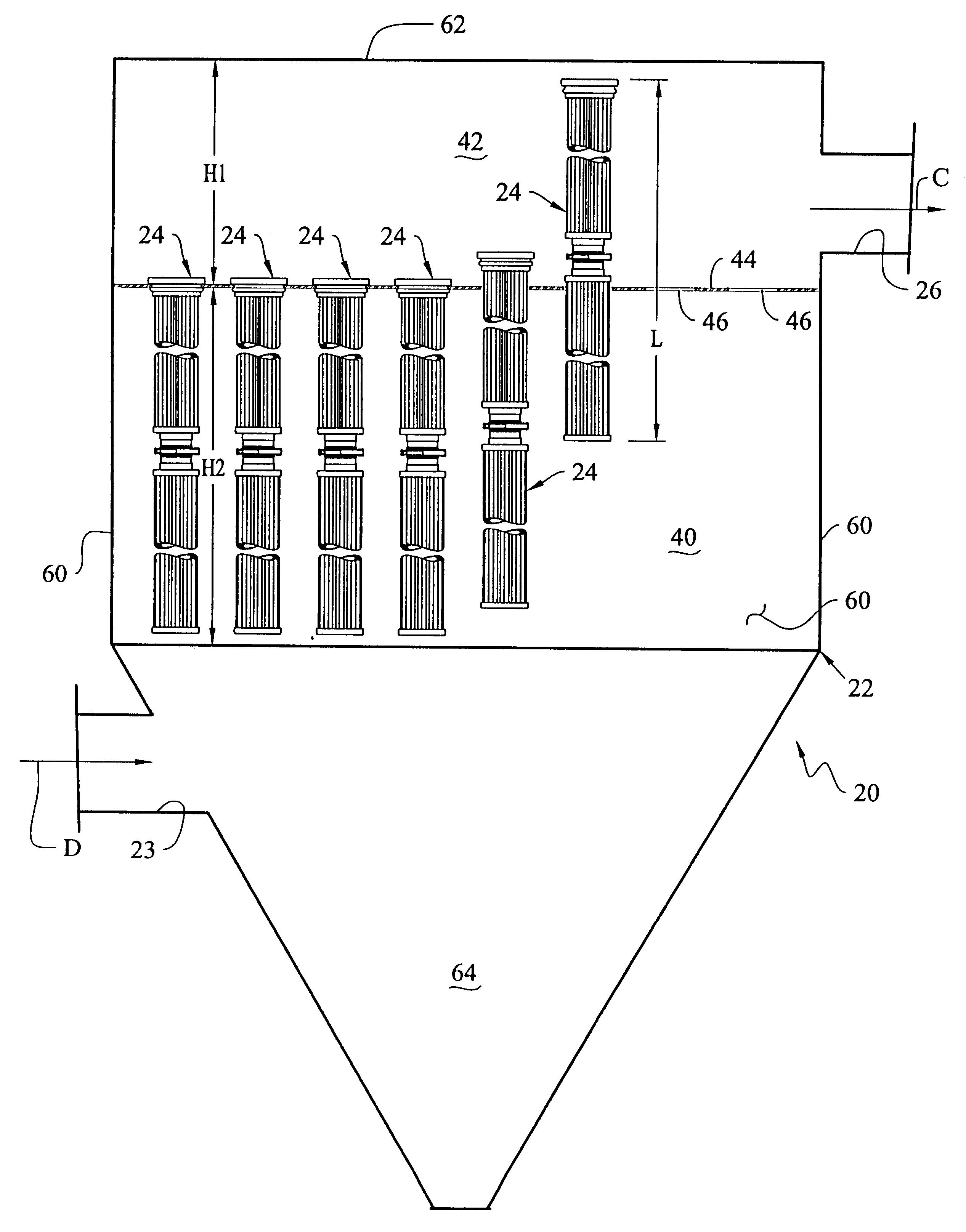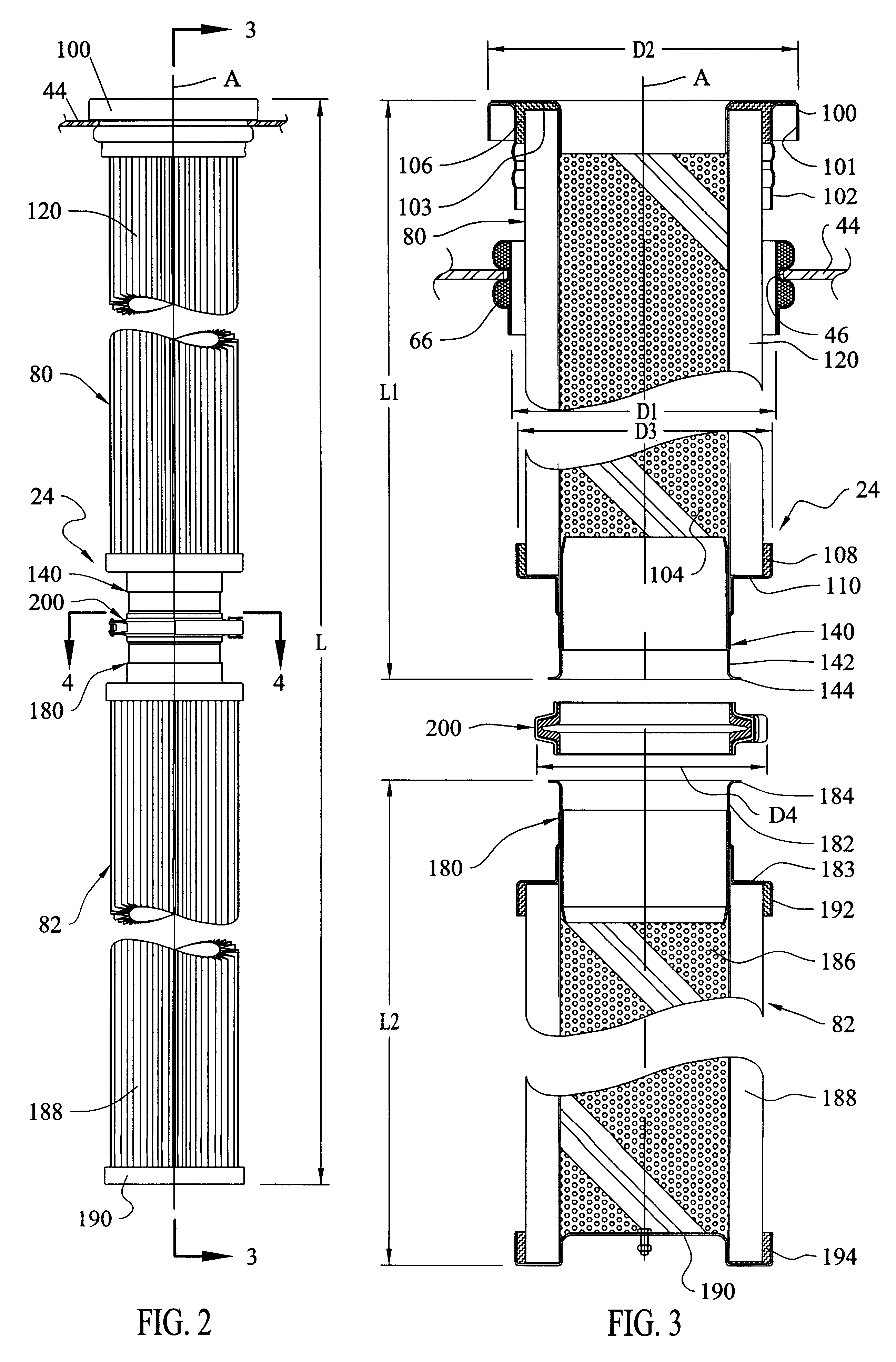Baghouse, long filter assembly and method of installation
a filter assembly and long filter technology, applied in the direction of filtration separation, separation process, dispersed particle separation, etc., can solve the problems of certain barriers to easy replacement of fabric filter bags by pleated elements, inability to install relatively long and rigid pleated elements without considerable manipulation, and inability to operate and structure the same baghous
- Summary
- Abstract
- Description
- Claims
- Application Information
AI Technical Summary
Benefits of technology
Problems solved by technology
Method used
Image
Examples
Embodiment Construction
A baghouse 20 according to the present invention is illustrated in FIG. 1. The baghouse 20 is defined by an enclosed housing 22. The housing 22 is made from a suitable material, such as sheet metal. A particulate laden gas D flows through the baghouse 20 from an inlet 23. The particulate laden gas D is filtered by a plurality of filter assemblies 24 (FIG. 2) of the present invention located within the baghouse 20. Cleaned gas C exits through an outlet 26 of the baghouse 20.
The baghouse 20 is divided into a "dirty air" plenum 40 and a "clean air" plenum 42 by a tubesheet 44 made from a suitable material, such as sheet metal. The tubesheet 44 has at least a portion that is substantially planar. The inlet 23 is in fluid communication with the dirty air plenum 40. The outlet 26 is in fluid communication with the clean air plenum 42.
A plurality of openings 46 extend through the planar portion of the tubesheet 44. Each opening 46 has an effective diameter D1 (best seen in FIG. 3), defined...
PUM
| Property | Measurement | Unit |
|---|---|---|
| Length | aaaaa | aaaaa |
| Length | aaaaa | aaaaa |
| Weight | aaaaa | aaaaa |
Abstract
Description
Claims
Application Information
 Login to View More
Login to View More - R&D
- Intellectual Property
- Life Sciences
- Materials
- Tech Scout
- Unparalleled Data Quality
- Higher Quality Content
- 60% Fewer Hallucinations
Browse by: Latest US Patents, China's latest patents, Technical Efficacy Thesaurus, Application Domain, Technology Topic, Popular Technical Reports.
© 2025 PatSnap. All rights reserved.Legal|Privacy policy|Modern Slavery Act Transparency Statement|Sitemap|About US| Contact US: help@patsnap.com



